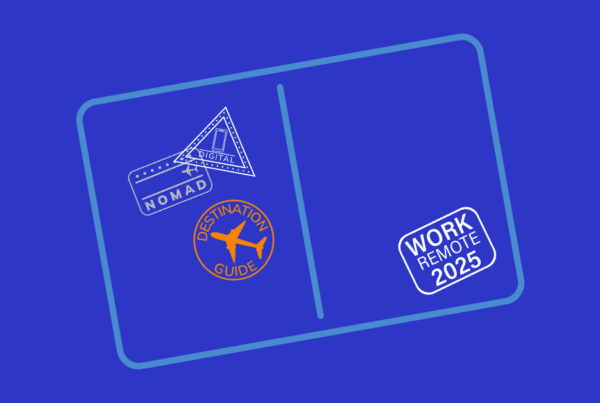
Before the Industrial Revolution, humans worked just as much as they needed to survive.
Hunter and gatherers’ sole focus was to provide for their family or tribe. Fourth-quarter sales, maximizing productivity and squeezing as much labor as possible into as many hours as possible is only a recent human development, and according to Historian Benjamin Hunnicutt, “Work itself is this brand new invention.”
In the 19th century, the Industrial Revolution gave humanity a glimpse of what was possible. Technology led the way and transformed the workforce. Companies could increase their output in ways they could have never dreamed of. However, workers suffered, being forced into unethical and dangerous working environments, in addition to the long hours required.
Revolutionizing the working experience, Henry Ford was the first CEO to introduce the 40-hour workweek, believing it was detrimental for workers to log excessive hours. (Don’t cheer too loud for Ford, however. He opposed labor unions and was violently anti-semetic.) Being an industrial leader, Ford’s model spread across the nation, and unions helped fellow auto workers strike for better conditions. Through unions, the workday eventually evolved into what it is today.
Except that was nearly 100 years ago and we are still holding onto 40 hours like it’s some must-be-attained number.
What the workforce doesn’t fully understand, though, is that hours logged on a timesheet is an extremely poor method of measuring productivity. With engaging work and the right working environment, an employee can get more done in four hours than an unengaged employee can accomplish in eight.
So, if our current norm goes against thousands of years of human survival and instinct, why are we so adamant on maintaining something so unnatural?
It’s 84 years later and it’s time to evolve
As part of President Franklin D. Roosevelt’s New Deal, the Fair Labor Standards Act was passed in 1938, establishing minimum wage, overtime pay, recordkeeping and youth employment standards. Except, not much has changed since it was put in place. The standard workweek still stands at 40 hours and the federal minimum wage has stood at a paltry $7.25 an hour for 13 years – even though the value of $100 in 2009 would now be worth $131.64. And workers are noticing.
The United States is currently experiencing a wealth gap that is completely out of control. For the first time since the Federal Reserve began tracking data in 1989, the total wealth of the top 1 percent of the United States population is now more than America’s entire middle class. The wealth gap had been increasing over time, however, the pandemic put a big spotlight on the inequality – United States billionaires saw their collective wealth increase by $1.8 trillion during COVID. Meanwhile, 100 million people were pushed into extreme poverty as a result of the pandemic.
Which takes us to our current tipping point – The Great Resignation. If the workforce leaders aren’t going to care about their workforce, then the workers are out. Since March 2020, employers have had an opportunity to step it up and care about workers’ needs. Largely, they haven’t. Currently, we are seeing a crisis in the education, retail and service industries, which have come under scrutiny for the way workers are exploited – even more so during the pandemic.
Teacher Melissa Villareal told the BBC, “it became so clear that this isn’t about my health, the health of the kids or the mental wellbeing of anybody. It’s a business and it’s about money. The pandemic ripped that veil from my eyes.”
The global work culture was already poor, so it’s no surprise the pandemic has only made it worse – encouraging workers to take control of their professional lives and force the workforce to evolve around their needs.
Freelancers are taking back the workweek
Workers tired of their bosses, rigid company, and professional disengagement are now finding peace in independence – and they’re not stopping.
When many workers were laid off or faced fewer hours due to COVID, they looked to alternate earning methods. Faced with expenses that don’t care about economic instability, these workers began picking up fractional work, quickly building full-fledged freelance careers.
In 2020, the freelance economy grew quickly, but 2021 is when the freelance economy saw a gigantic boom. According to Upwork’s Freelance Forward Economist Report, the number of full-time freelancers grew to an all-time high, from 33.8 percent to 35 percent from 2020 to 2021. That’s an additional two-million workers switching from a traditional full-time job to being 100 percent self employed.
Driving the growth is the ability to disrupt the 40-hour workweek. Freelance workers have the luxury of determining where and when they work. It’s a lifestyle traditional workers got a taste of when COVID forced many to go remote. And now that they have this taste of autonomy, they can’t get enough of it.
A flexible schedule may be the biggest perk of freelancing but income generated is another perk that surprises many people unfamiliar with freelance life. In 2019 – a year before COVID pushed millions into freelancing – skilled freelancers earned a median of $28 an hour, which results in more per-hour earnings than 70 percent of the workforce. As of December 2021, that number has risen to $32 an hour.
Since the workforce’s best-kept secret was exposed, freelancing has become less of a side gig and more of a serious career. According to a 2021 FlexTal survey, a decent chunk of traditional workers are eyeing freelance life. Out of the workers surveyed, 40 percent would leave their current role to pursue a freelance career if dependable income was guaranteed. As a result of this demand, freelance marketplaces – like Upwork- and talent-matching platforms – like FlexTal – have stepped up to make job acquisition easier for freelance workers.
With the world evolving around freelance workers and workers’ needs in general, those stuck in the past will be left in the past.




